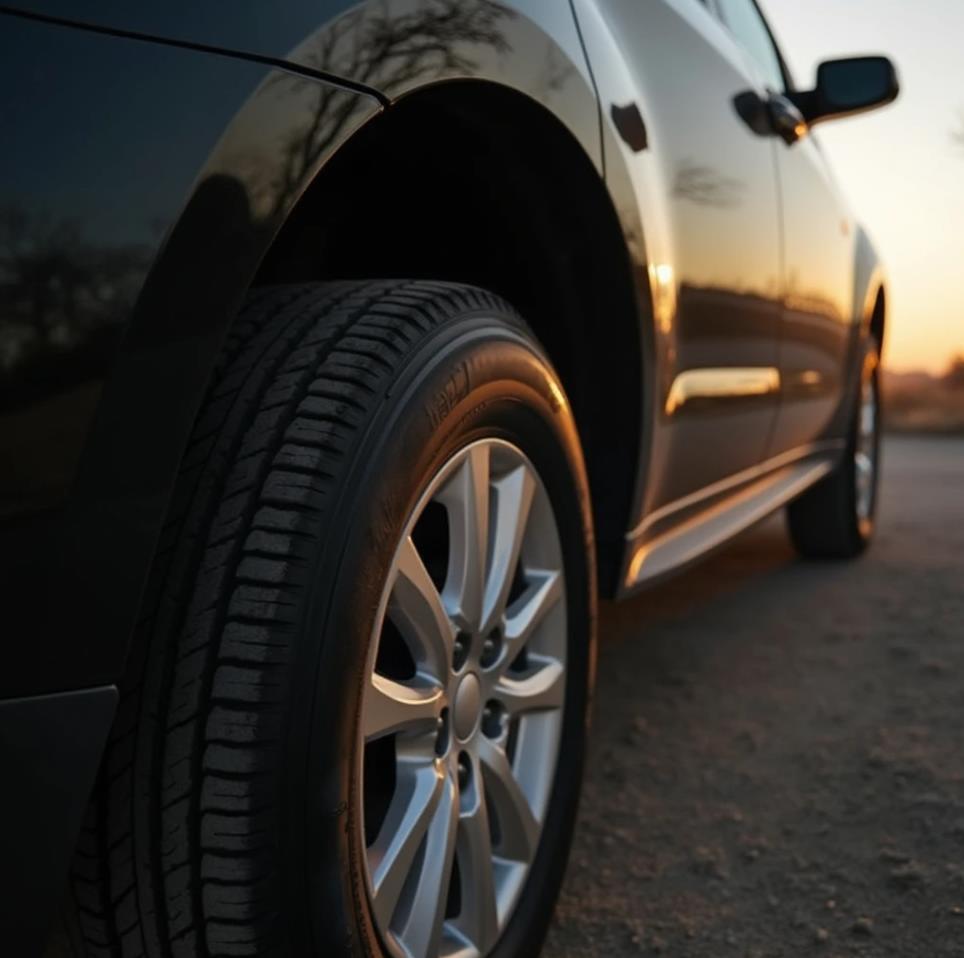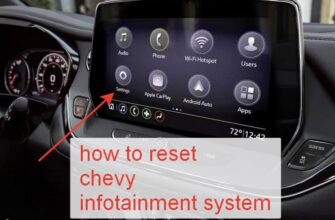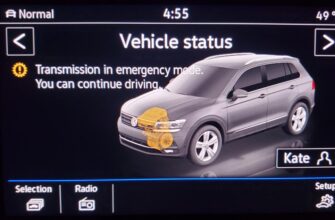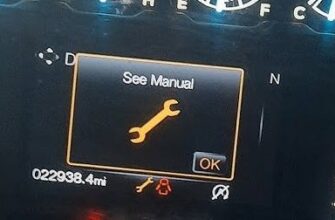There it is, glowing stubbornly on your dashboard: the tire pressure monitoring system (TPMS) light. In your Chevy Equinox, this light is designed to warn you when one or more of your tires might have incorrect air pressure. While sometimes it’s a simple fix, other times it can point to a problem with the sensor itself. If your Chevy Equinox TPMS sensor is not working correctly, or that tire pressure light just won’t turn off, it’s frustrating!
The TPMS is an important safety feature, helping you maintain proper tire inflation, which is crucial for handling, fuel efficiency, and tire lifespan. So, when the system flags an issue, it’s worth investigating. Don’t worry, though; many Chevy Equinox tire pressure light fix steps are things you can tackle yourself or easily understand before heading to a mechanic.
Let’s figure out why your TPMS light is on and what you can do to get it back to normal.
Understanding Your Chevy Equinox TPMS
Your Chevrolet Equinox uses a direct TPMS. This means there is a small sensor located inside each wheel, usually mounted on the valve stem. These sensors have tiny batteries and radio transmitters that send data (including tire pressure and often temperature) wirelessly to the vehicle’s computer. The computer then displays this information (on your dashboard or infotainment screen) and triggers the tire pressure light if the pressure in any tire falls below a certain threshold or if there’s a system malfunction.
A flashing TPMS light usually indicates a system malfunction or that the system needs to be reset or relearned, while a solid light typically means low tire pressure in one or more tires.
Common Reasons Your TPMS Light is On (Beyond Just Low Air)
While low tire pressure is the most frequent reason for the TPMS light, a persistent light, especially a flashing one, can indicate other issues with the tire pressure monitoring system Chevy Equinox.
- Low Tire Pressure (The Simplest Reason): The system detected that one or more tires are below the recommended pressure. This is what the system is primarily for!
- Temperature Changes: Tire pressure fluctuates with temperature. Cold weather causes pressure to drop, potentially triggering the light. Warming temperatures increase pressure.
- Faulty TPMS Sensor: The sensor in the wheel might have failed due to damage, corrosion, or an internal fault.
- Dead TPMS Sensor Battery: TPMS sensors have non-rechargeable batteries that eventually die. When the battery is depleted (typically lasting 5-10 years), the sensor stops transmitting data, and the system flags an error. This is a very common reason for a sensor to stop working.
- Sensor Needs Relearning/Reprogramming: If you’ve rotated your tires, replaced a sensor, or changed a wheel, the vehicle’s computer might not know the correct location or identity of the sensors. They need to be “relearned” or “reprogrammed” so the system knows which sensor belongs to which wheel position.
- TPMS Module Issue: Less common, but there could be a problem with the vehicle’s TPMS control module or wiring.
How to Troubleshoot Your Chevy Equinox TPMS
Don’t rush to the mechanic just yet! Here’s a step-by-step guide to troubleshooting your Chevy Equinox tire pressure sensor issue:
Step 1: Check Your Tire Pressure (Manually!)
This is the absolute first thing to do. Do not just trust the dashboard reading if the light is on; use a reliable tire pressure gauge to check the pressure in all four tires (and your spare, if applicable).
- Find the correct tire pressure for your Equinox on the sticker located on the driver’s side door jamb.
- Inflate any underinflated tires to the recommended PSI. Do this when the tires are cold (driven less than a mile).
Step 2: Drive Your Vehicle
After adjusting the pressure, drive your Equinox for a bit (sometimes 5-10 miles at speeds over 25 mph). The system might automatically detect the correct pressure and turn the light off. If the light was solid and due to low pressure, this often fixes it.
Step 3: Perform a TPMS Reset, Relearn Procedure
If the light stays on or was flashing, the sensors might need to be reset or relearned. Chevrolet Equinox vehicles often have a manual relearn procedure that doesn’t require a special tool, though the exact steps can vary slightly depending on your model year.
Here’s a general guide for a common manual relearn procedure (always check your owner’s manual for exact steps for your year):
- Park your Equinox in a safe place away from other vehicles or strong radio signals (which can interfere).
- Set the parking brake.
- Turn the ignition to the “ON” position, but do not start the engine.
- Locate the TPMS reset button. This is often found under the steering wheel on the dash, or sometimes in the glove box or center console. (Consult your owner’s manual if you can’t find it).
- Press and hold the TPMS reset button until the tire pressure light flashes three times and the horn beeps twice. This indicates the vehicle is entering TPMS learn mode. A message like “TIRE LEARNING ACTIVE” might appear on your Driver Information Center (DIC).
- Start with the driver’s side front tire. Use a tire pressure gauge or the pin on the air hose to quickly deflate the tire for about 10-15 seconds, or until you hear a single horn chirp. The chirp confirms the sensor ID has been learned.
- Move to the passenger’s side front tire next. Repeat the process of deflating until you hear the horn chirp.
- Go to the passenger’s side rear tire. Repeat the process.
- Finally, go to the driver’s side rear tire. Repeat the process.
- After the last sensor is learned, the horn should beep three times quickly. The “TIRE LEARNING ACTIVE” message should disappear.
- Turn the ignition off.
- Inflate all four tires back to the recommended pressure listed on your door jamb sticker.

If the light is still on after completing the relearn procedure and inflating the tires correctly, it likely indicates a faulty sensor or a system issue.
“My 2014 Chevy Equinox had the TPMS light on after a tire rotation. I followed the relearn procedure in the owner’s manual – letting air out of each tire until the horn chirped. It took a couple of tries, but the light eventually went off! Saved me a trip to the shop.” – Mike, 38, Equinox Owner
You can often find video tutorials demonstrating the Chevy Equinox TPMS relearn procedure for specific model years by searching online. This can be very helpful to see the process visually.
<br/> [Consider adding an embed here if a good, relevant YouTube video is found, e.g., search YouTube for “Chevy Equinox TPMS reset procedure” and evaluate options.] <br/>
Step 4: Inspect the Sensors
If the relearn failed, do a visual check of your valve stems. Look for any physical damage, corrosion, or signs that a sensor might have been hit or broken.
Step 5: Professional Diagnosis
If you’ve checked the pressure, attempted the relearn procedure, and the light is still on (especially if it’s flashing), it’s time to seek professional help. A mechanic or tire shop has specialized TPMS scan tools.
- Diagnosing: A TPMS scan tool can communicate directly with each sensor and the vehicle’s computer. It can read the unique ID of each sensor, check its battery status, and read any fault codes stored in the TPMS module. This will quickly tell you which specific sensor (if any) is faulty or if there’s an issue with the vehicle’s TPMS module itself.
- Symptoms of a Bad Sensor: If a sensor has a dead battery or has failed internally, the TPMS scan tool won to be able to communicate with it, or it will report a low battery/malfunction error. You might also notice that the dashboard display doesn’t show a pressure reading for that specific tire, or it shows a default/incorrect reading.
Replacing a Faulty TPMS Sensor
If diagnosis confirms a faulty sensor (most often due to a dead internal battery), the sensor needs to be replaced.
- The Process: Replacing a tire pressure sensor replacement Chevy Equinox involves dismounting the tire from the wheel, removing the old sensor, installing the new sensor (which usually comes with a new valve stem), remounting and balancing the tire, and then performing the TPMS relearn procedure again so the vehicle recognizes the new sensor ID.
- Cost: The cost to replace Chevy Equinox TPMS sensor can vary depending on the sensor type (OEM vs. aftermarket), labor rates, and if you replace just one or all four. Sensor parts themselves can range from $20 to $100+, but the labor to dismount/mount/balance the tire adds to the cost. Expect to pay anywhere from $50 to $150 per wheel for parts and labor to replace a single sensor at a shop, not including the initial diagnostic fee. Replacing all four sensors and performing a relearn could cost $200-$500+. Many shops recommend replacing sensors in sets if they are original and aging, as others might fail soon after one does.
“Got the flashing tire pressure light on my 2016 Equinox. The shop used their tool and said the battery in the front passenger sensor was dead. Cost me about $120 to have them replace the sensor and do the relearn. Maria, 55, the technician explained that the sensor batteries only last so long.” – An owner getting a sensor replaced
When Else Might the Light Come On?
Remember that dashboard warning lights, like the TPMS light, are your car’s way of communicating. Understanding common warning indicators is helpful. For instance, a separate issue like an engine problem could trigger the Check Engine light (as discussed in guides like Flashing Check Engine Light After Filling Gas on Jeep Wrangler – Here’s Why & How to Fix It, though that’s for a Jeep). Similarly, a generic maintenance reminder might show a different light like the “Maintenance Required” light (explained for a Toyota in What Does Maintenance Required Mean on a Toyota Camry?). While distinct from TPMS, these examples show how understanding specific warning messages is key to proper car care.
Frequently Asked Questions (FAQ)
Q: Why is my Chevy Equinox tire pressure light on even after filling the tires?
A: If the light stays on after inflating, the most common reasons are that the system needs a TPMS relearn procedure, or one or more of the TPMS sensors in the wheels are faulty (often due to a dead battery).
Q: How do I reset the TPMS light on my Chevy Equinox?
A: You can often perform a manual TPMS relearn procedure by turning the ignition on (engine off), pressing and holding the TPMS reset button until the horn beeps, and then adjusting the pressure in each tire in a specific order until the horn chirps for each wheel. Refer to your owner’s manual for exact steps for your year.
Q: How long do Chevy Equinox TPMS sensors last?
A: TPMS sensors have internal batteries that typically last between 5 and 10 years. Once the battery dies, the entire sensor usually needs to be replaced.
Q: What is the typical cost to replace Chevy Equinox TPMS sensor?
A: Replacing a single TPMS sensor on a Chevy Equinox typically costs between $50 and $150 per wheel, including parts and labor at a repair shop. The cost can be higher if replacing multiple sensors or at a dealership.
Q: Can I drive with the TPMS light on?
A: A TPMS light means there’s an issue with tire pressure monitoring. While you can drive, it’s important to manually check your tire pressure with a gauge regularly, as the system might not warn you of dangerously low pressure if it’s malfunctioning. Address the cause of the light as soon as possible for safety.
Conclusion
Seeing the TPMS light on in your Chevy Equinox can be a nuisance, but it’s an important indicator from your vehicle. Often, a simple check and adjustment of tire pressure or performing a Chevy Equinox TPMS reset procedure is all that’s needed to resolve the issue. However, if the light persists or is flashing, it often signals a problem with one of the sensors themselves, frequently due to a dead battery or internal failure. Knowing how to fix Chevy Equinox tire pressure sensor issues involves understanding the system, performing basic troubleshooting yourself, and knowing when to consult a professional for diagnosis and sensor replacement. Keeping your TPMS system functioning correctly ensures you’re always aware of your tire pressure, contributing to safer driving and better tire maintenance.








